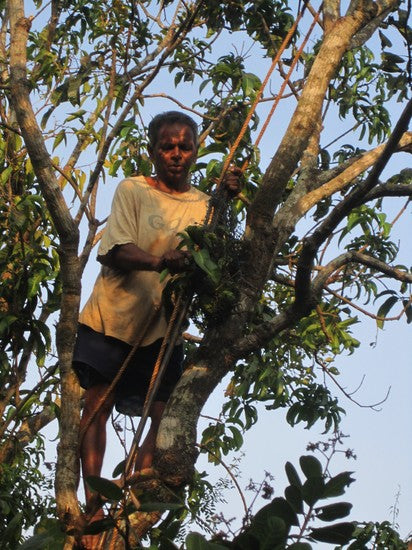The arrival of the Indian summer marks the resumption of the eternal debate over which variety of mango is India’s best.
If you’re from the north, you’d better vote the Dussehri or the Langda. If you’re on the western coast, you can easily blend in by picking the Hapus, Ratnagiri or the Alphonso. In the south, it’s Baiganapally all the way. And if it’s the east, well, Fazli has known to cause diplomatic troubles with our neighbours over claims of who is the true and rightful ‘owner’ of this variety.
Of course, in a country where the mango originates (mangifera indica), such devotion and sentiment is entirely understandable – because the debate is about deciding the title of the “world’s best mango”. The fact that the mango remains almost the last of the truly seasonal fruit – probably contribute to the fervour of the arguments.
However, even in mango-mad India, the dedication and contribution of Goa to the mango is unique – with a long history of documented mango grafting and breeding. This resulted in over 150 varieties in what is the smallest state in the country. While several of these varieties are now difficult to find – the Mancurad is clearly the big local favourite and much beloved to every Goan.
The debate about the best mangoes in the world never ends, with each region of India vociferously pitching their favourite local variety
Having grown up with the Hapus (seemingly India’s most commercial mango) in Bombay, its easy to be caught up in a debate with Goan’s on which one is best. In my case, I’ve very quickly swapped loyalties to the Mancurad (or malcurado or ‘mal-coloured’) mango – and have become an unabashed evangelist for it in Goa and beyond.
The most prized of the Goan Mancurad are to be found on the riverine islands of Chorao and Divar – where I feel compelled to find my way every summer over the last five years. This photo essay is an attempt to share with you, some part of this unique (and delicious) experience…
The story of this Goan mango tree begins 150 years ago, in an orchard on the idyllic island of Chorao
Alleys of these imposing trees grow near the backwaters of the Mandovi river, whose cool breeze adds to their iconic flavour
A perpetual bed of dry-leaf mulch carpets the orchards, protecting the soil from both the sun and the rain
As the early first flowering transforms into established fruit, the activity in the orchards begins to stir
In an over-commercialised trade, it takes a farmer with uncommon patience to let mangoes ripen at their own pace
Climbing four stories high to pick mangoes when they are just right, requires the disappearing skill of old-school pluckers and their rope harnesses
The mango catcher is the primary tool of the plucker’s trade – and ensures the precious fruit have a soft landing
Traditional wicker baskets are filled with the mangoes and gently lowered down to eager hands below
Mangoes of different sizes head off for the ripening chamber – where slow and natural is the norm and modern ripening agents are shunned
The bed of hay wraps the Mancurad in a layer of warmth which enables the slow, even and natural ripening process
The luscious golden, Mancurad mangoes are graded and sorted for their ride into the city markets
These reddish-gold beauties arrive at our tables with a wonderfully rich aroma promising a slice of heaven
Every year presents us with another opportunity to find the perfect jhadpiko (tree ripened) mango

